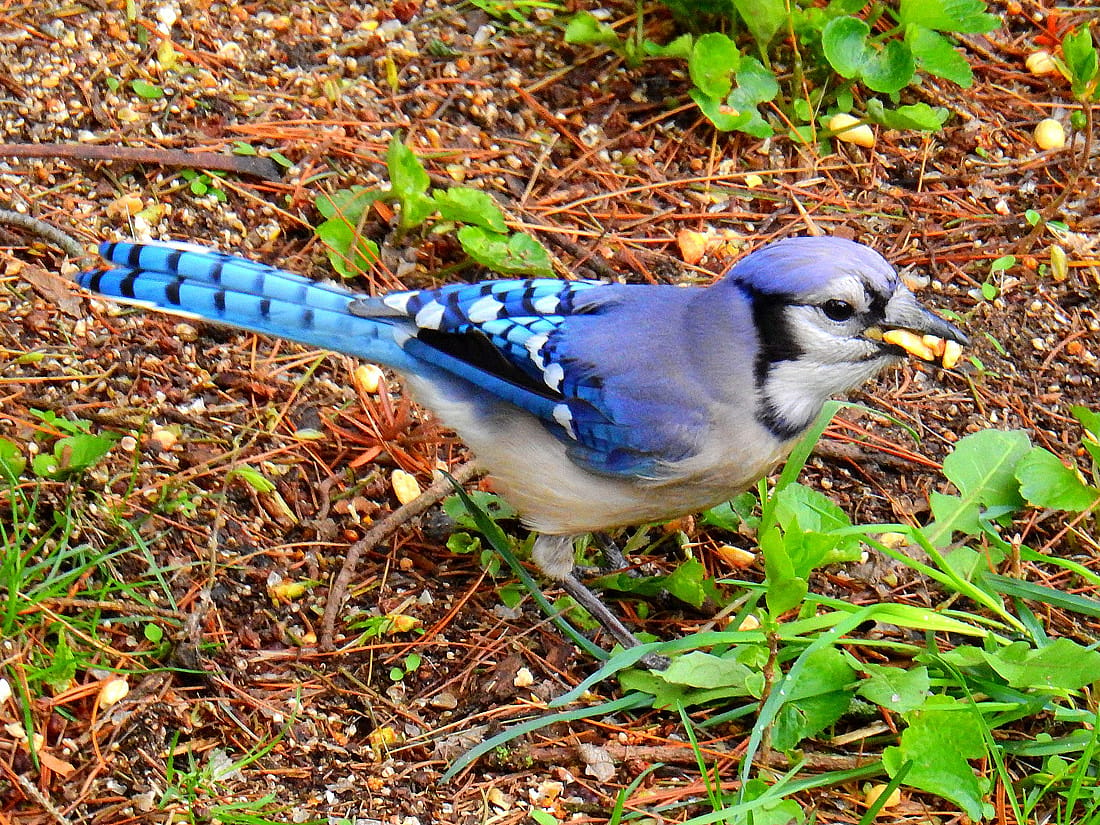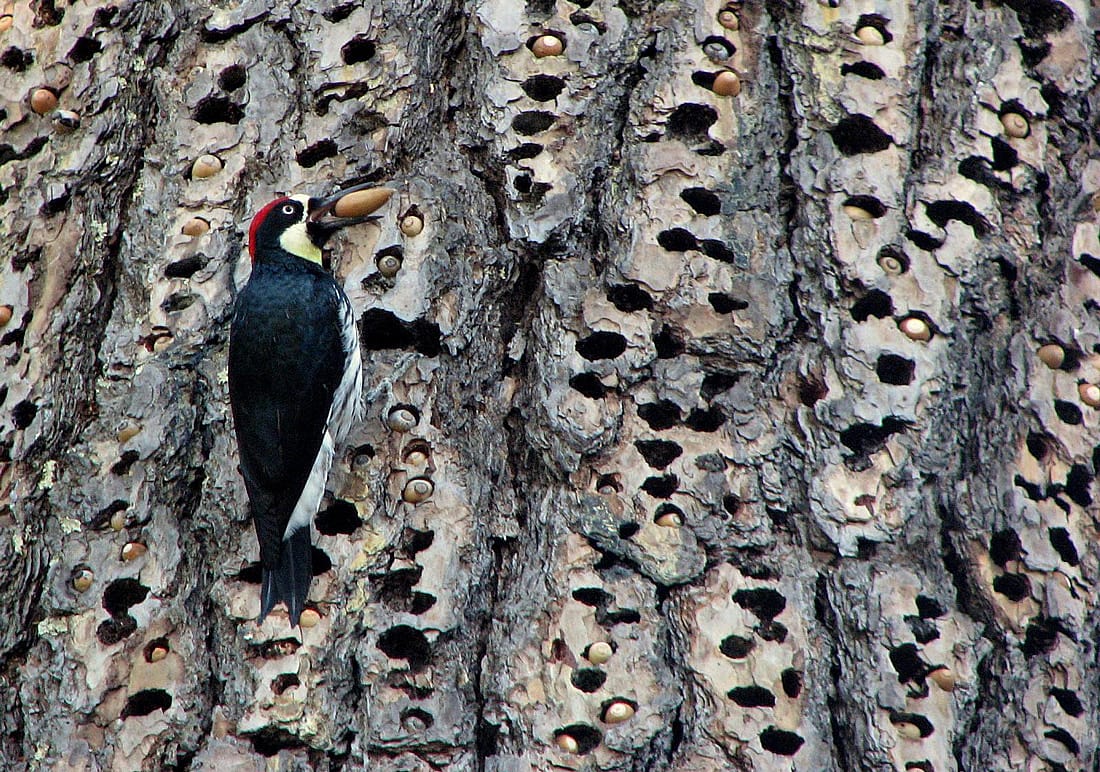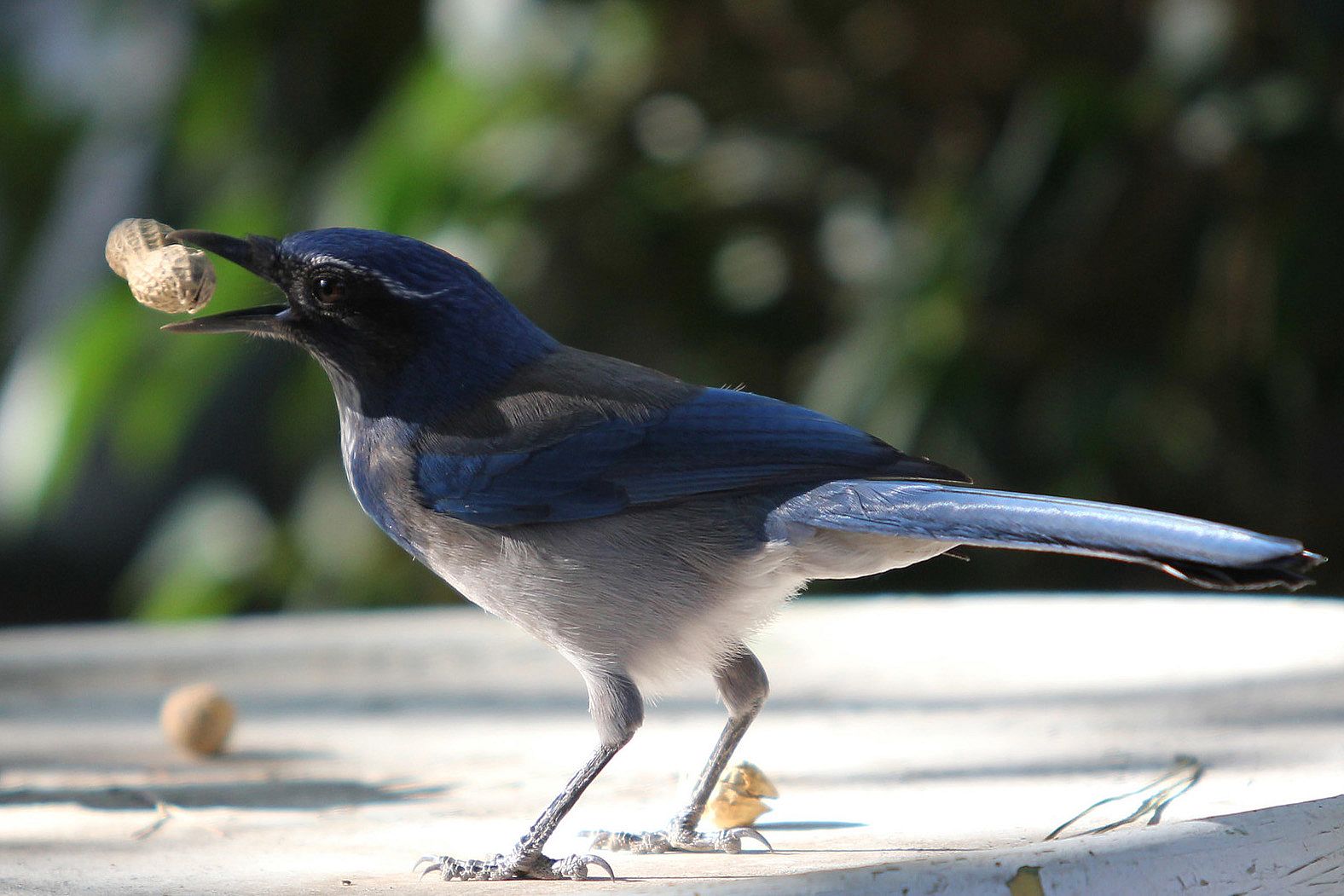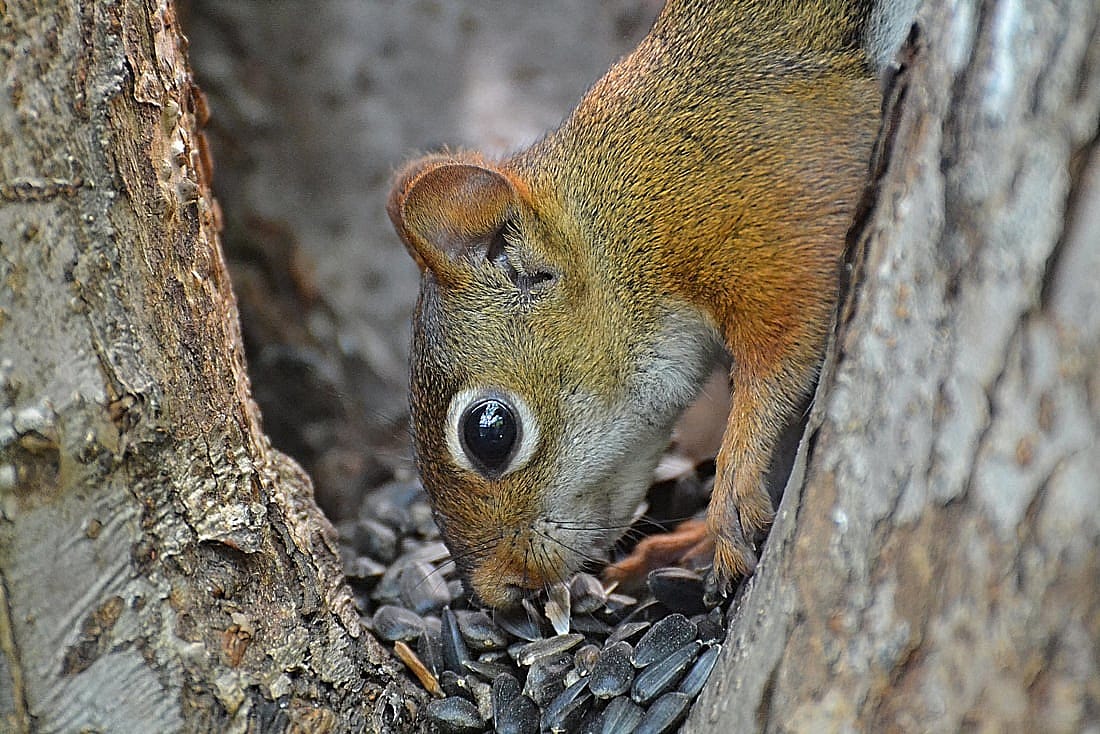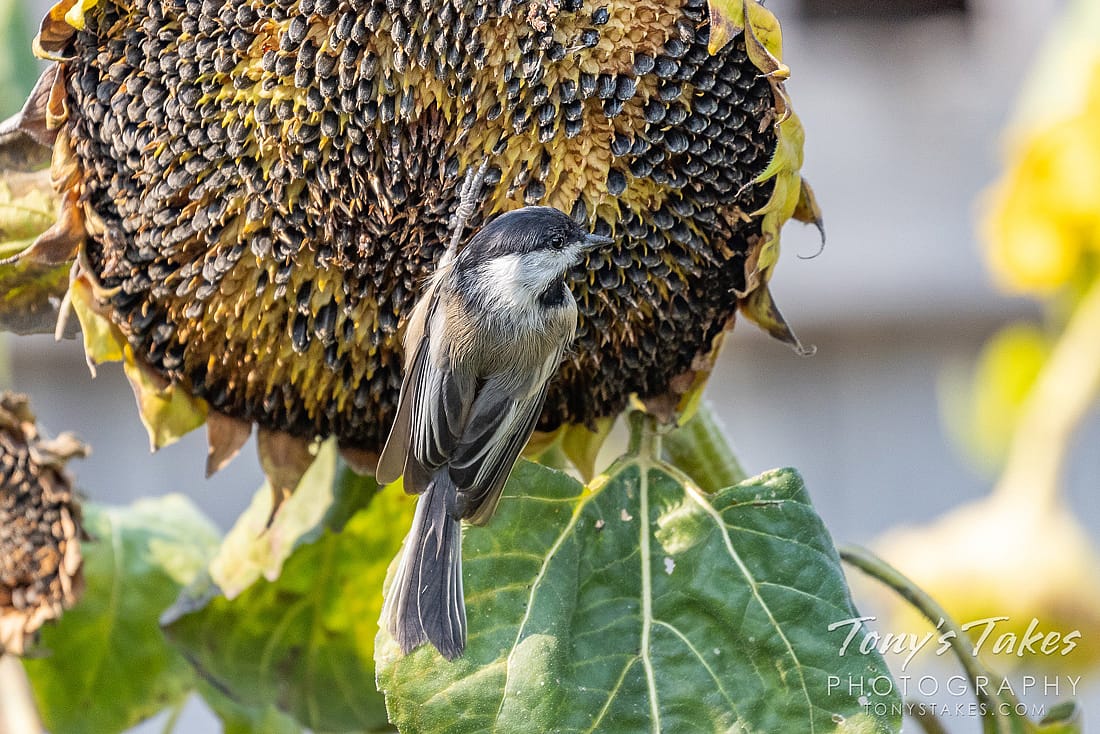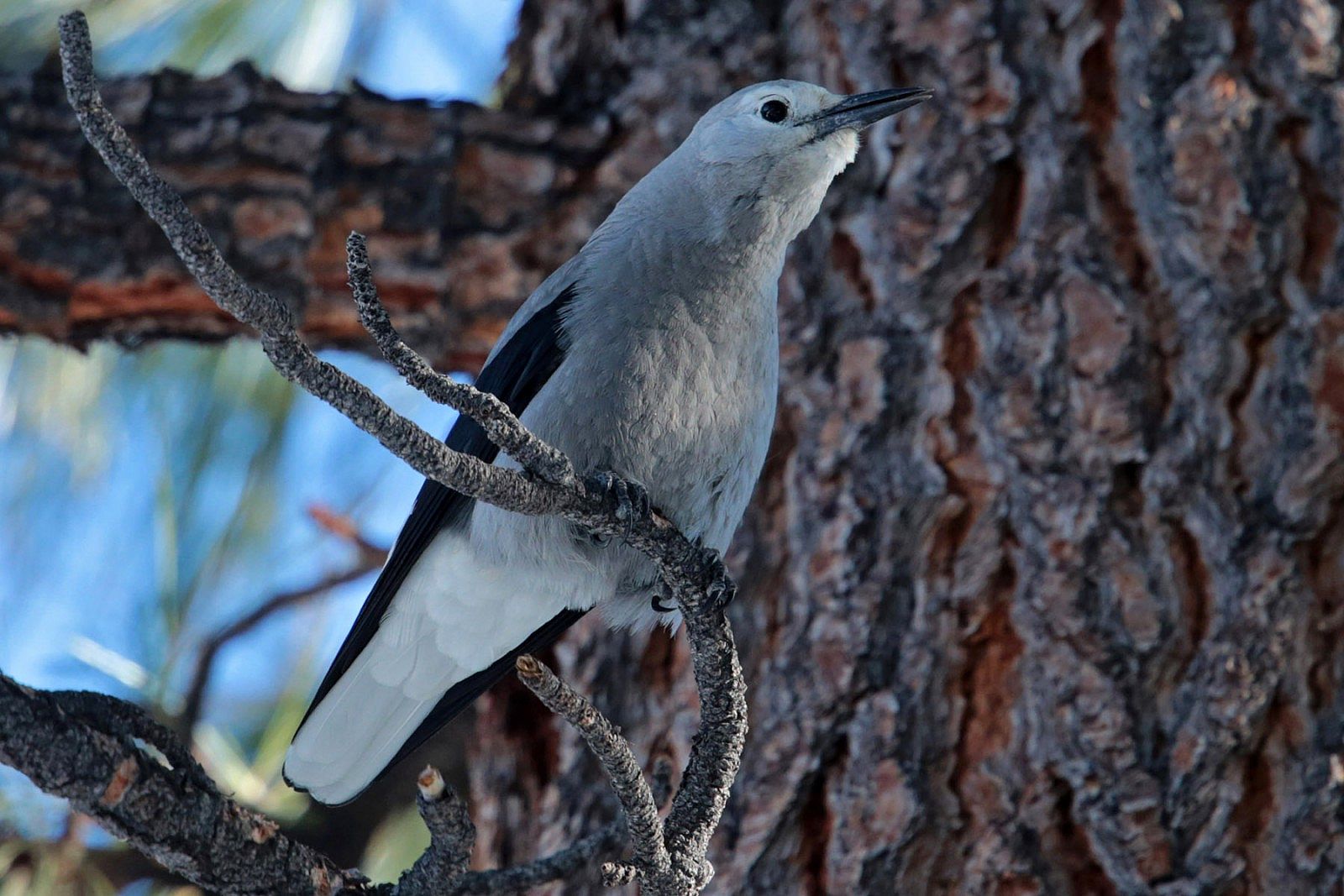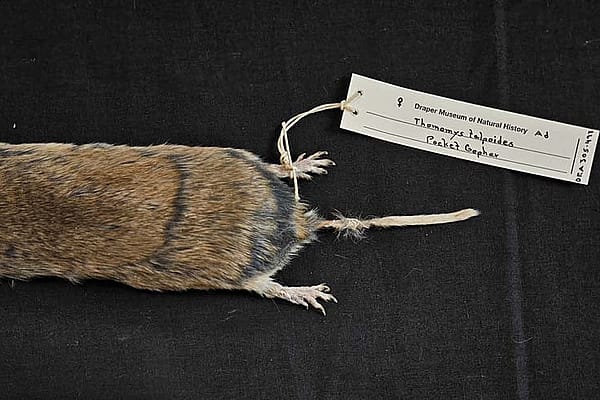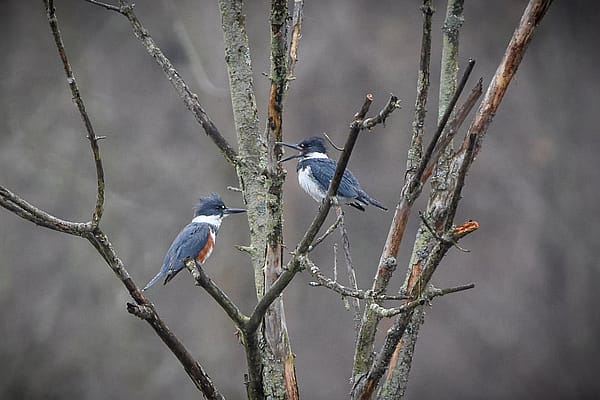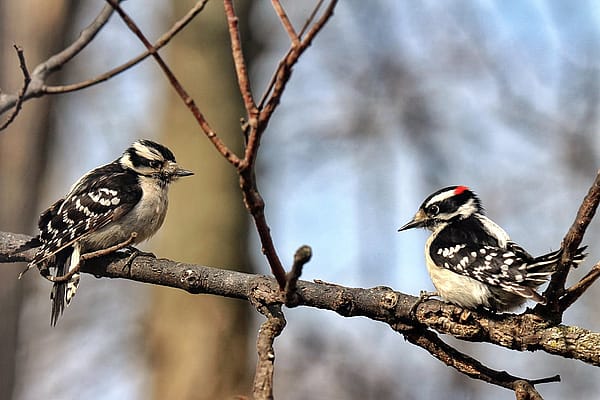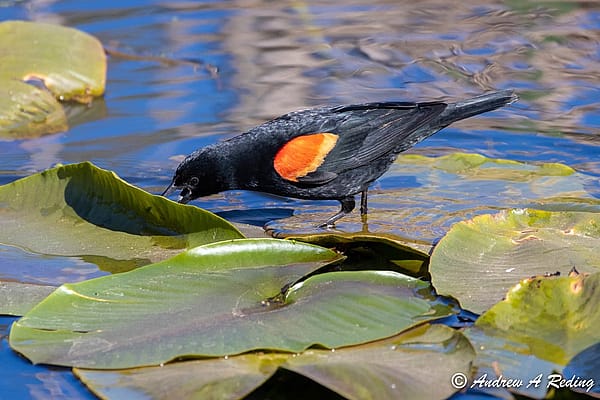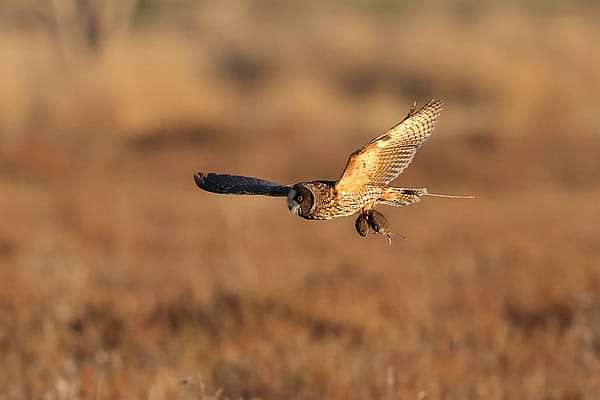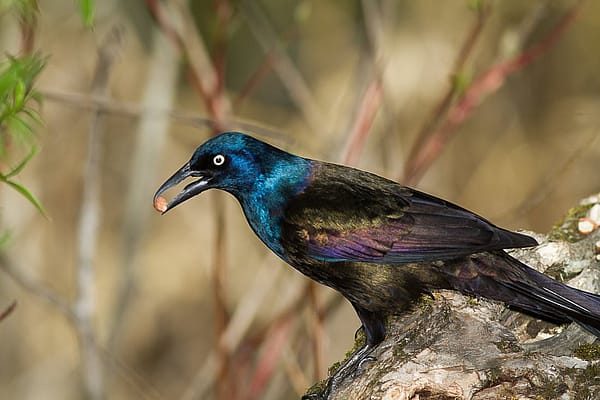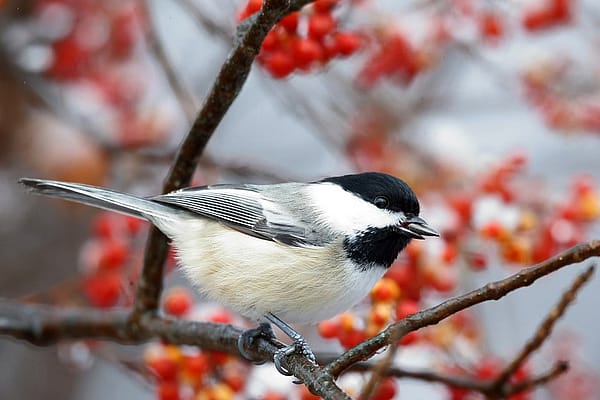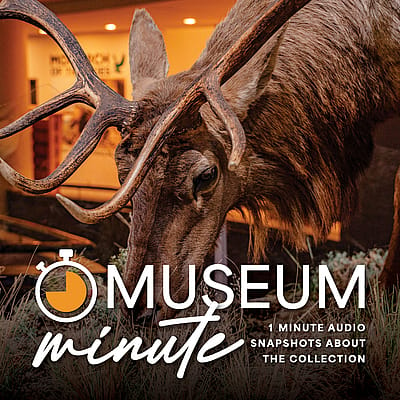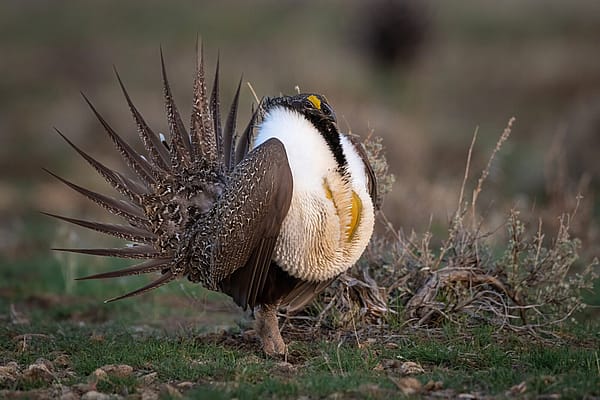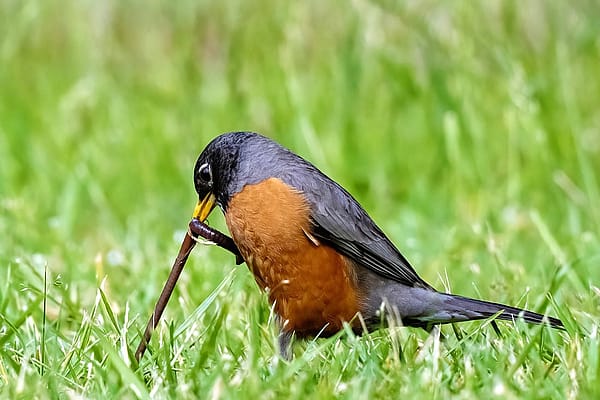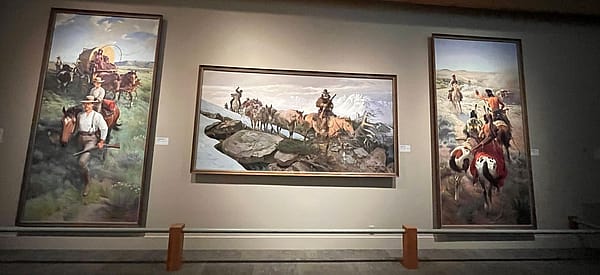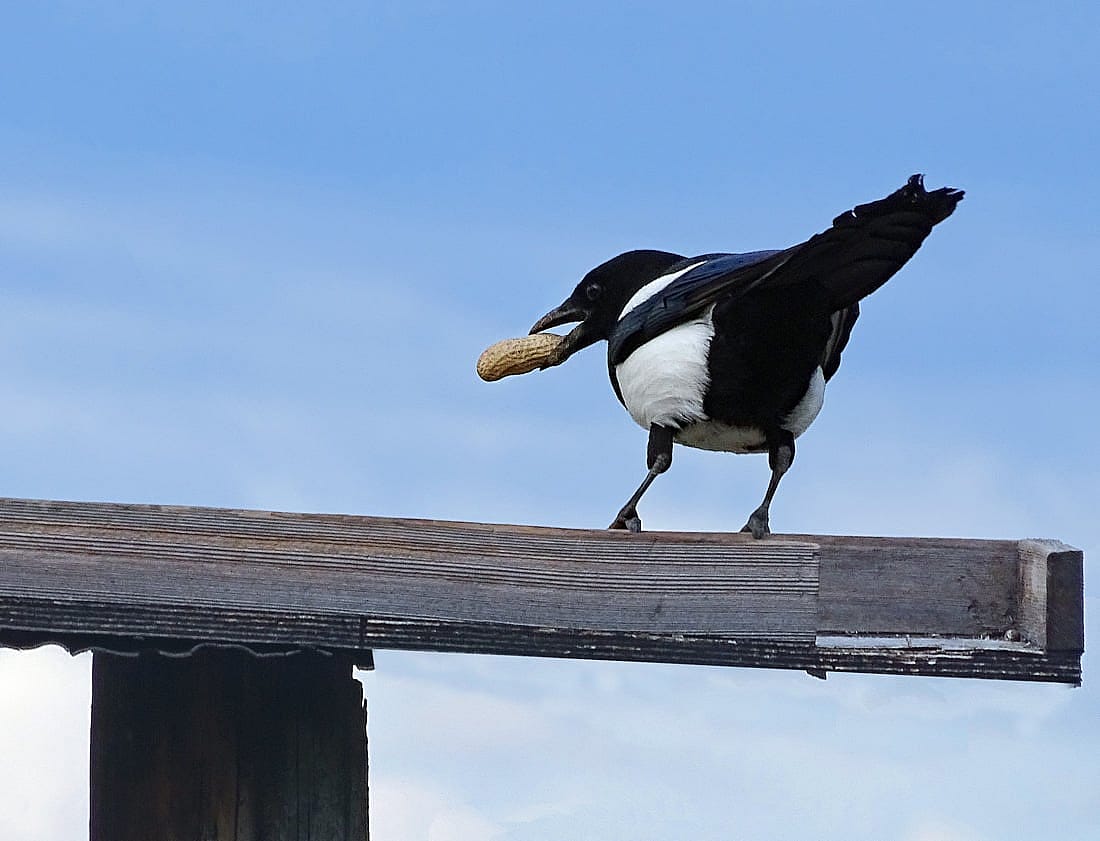
Caching in Birds: What it is, the Why and How
A few weeks ago a friend asked me what the word cache meant. Many species of animals commonly cache complete meals or leftovers. In fact, more than 300 species of birds, mammals, and arthropods are known to cache food. This got me thinking about some of the interesting stories and facts I have heard about birds engaging in caching. For this reason I am sharing a few interesting facts about this behavior in the bird world.

WHAT IS CACHING ?
Caching is a behavior in which animals store food for the future. This may include both uneaten and partly eaten food items. As a result, they will try to hide the food source in a location where it will not be found by other animals.
This behavior may be done to build up a store of food for the winter. Moreover, a cache is valuable for occasions when the weather may take a turn for the worse making it difficult or impossible to hunt. In addition, they may cache during seasons where it may become considerably colder in the evening. This cache will make a late afternoon meal to supply extra energy for the night.
Breeding season is another time of the year when birds may increase their caching behavior, ensuring there will be food for their young.
Furthermore, in the case of meat eaters it may also be as a result of killing more prey than can be eaten in one meal. When faced with competition, fruit and seed eaters may wish to gather as much as they can while the supply lasts.
WHAT ARE EXAMPLES OF BIRDS THAT CACHE?
Although not all birds cache food for the future, many do. For example nuthatches, nutcrackers, chickadees, titmice, jays, crows, falcons, many owls, shrikes, and some woodpeckers do. On the other hand, doves, sparrows, blackbirds, and finches along with a lot of other birds do not.
RAPTORS AND CACHING
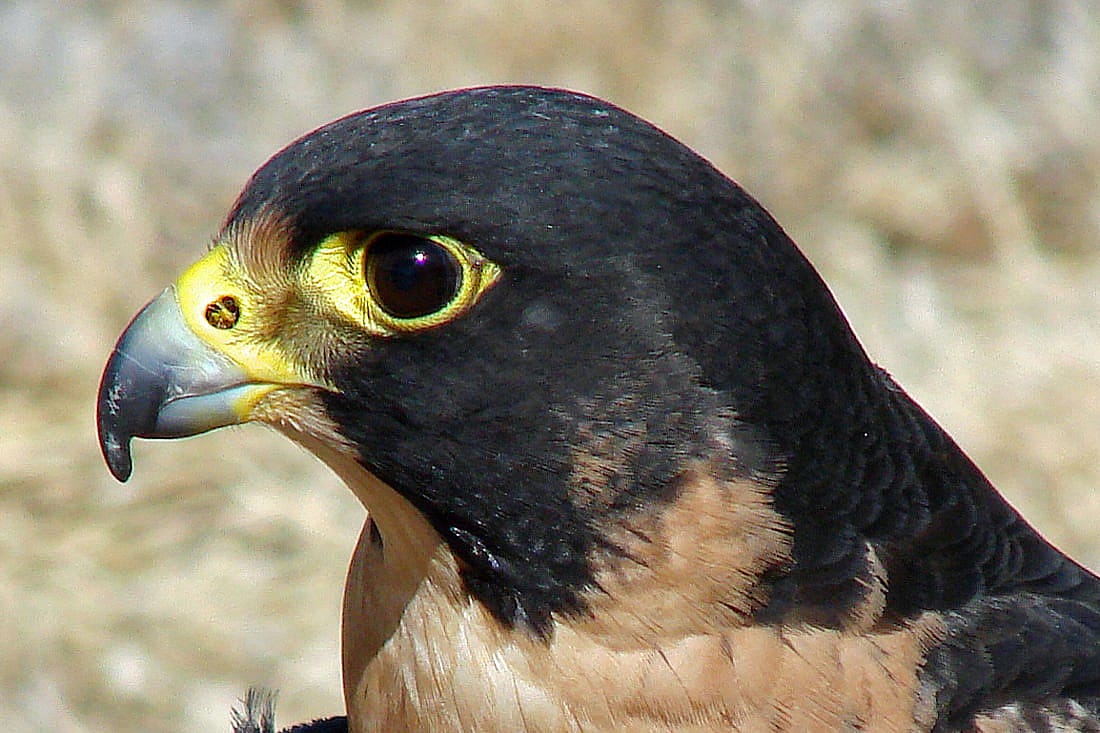
Observed Caching Behavior of Falcons
Although all falcons cache food, some mainly exhibit this behavior during breeding season, while others cache all year.
In the book, The Falcons of the World, Tom Cade explains how a falcon may behave while caching. On foot, the falcon may approach a possible hiding place slowly. It will then look around several times, after which it will thrust the prey into the chosen hiding location. Then, stepping back a short distance, the falcon will examine the area. As a result, the falcon will often readjust the prey. If still not satisfied it may retrieve the prey and hide it somewhere else. Once the falcon is satisfied with the location, it will examine the hiding place by walking around it or by hovering over its location. This may be for the purpose of fixing the location in their memories.
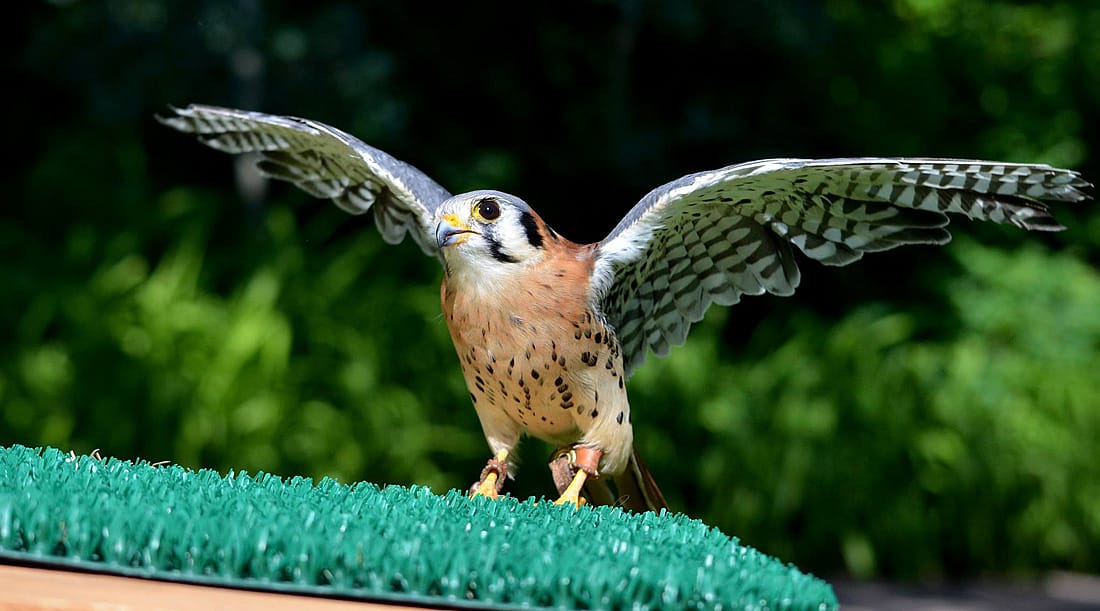
American Kestrels
Male kestrels may at times cache prey by stacking it in one location during breeding season. Thereupon the female, knowing of this location, can retrieve prey when the need arises.
Moreover, author Kate Davis reports that young kestrels begin caching within a few weeks after leaving the nest.
One study, Nunn et al. (1976), reported that over a one-hour time period a female kestrel killed and cached 20 mice thrown from a car window one at a time.
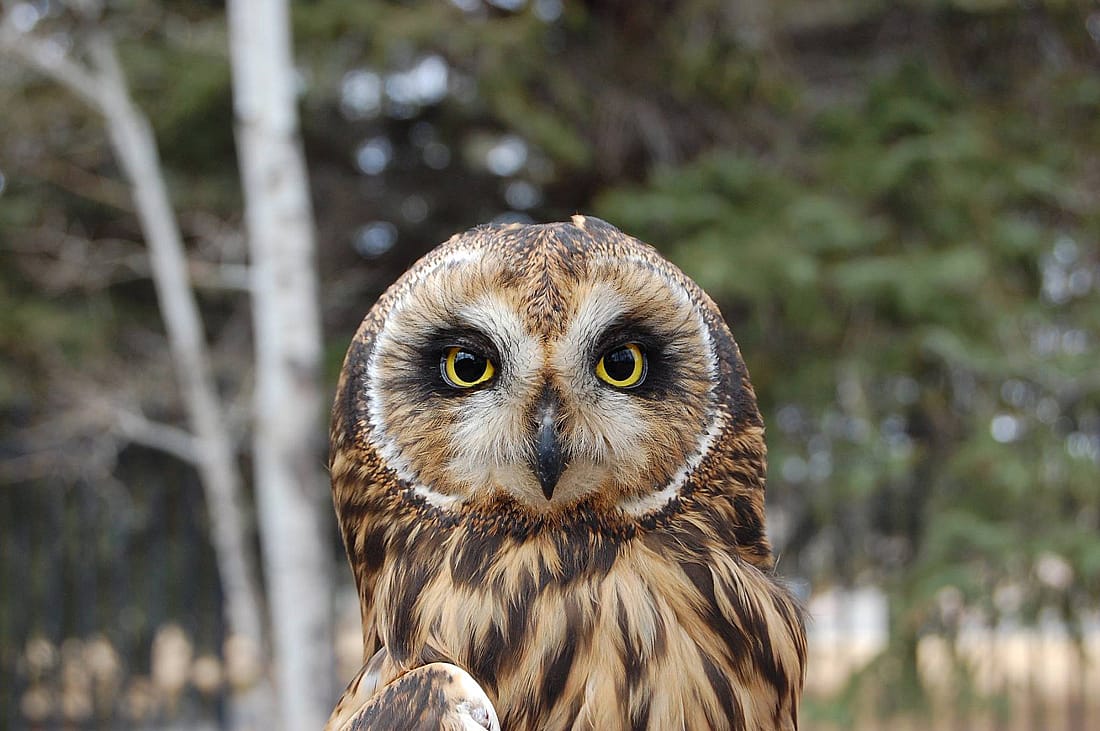
Short-Eared Owls
Owls are another species that commonly cache prey. According to Morley Nelson of the Snake River Birds of Prey National Conservation Area, Short-eared Owls are one of the species known to cache. As an example, they report that adult Short-eared Owls may stockpile up to five prey items, thus ensuring there will be available food for the future.
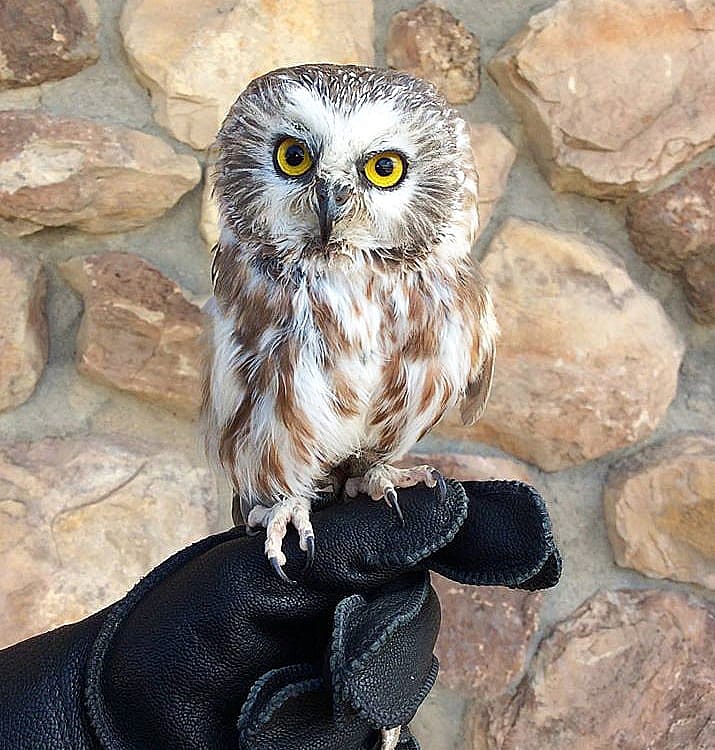
Additionally, Saw-whet Owls will also cache extra food. They have been known to kill and cache as many as six mice. These little birds may also take a whole, or partially eaten prey item to their roost and stand on it. Since they are nocturnal, they may continue to stand on this prey until the next night. If the prey becomes frozen, Saw-whets will lie down on it (in the same way they incubate eggs) in order to thaw it.
SEED EATERS AND CACHING
If you feed wild birds, you may have noticed that some birds fly off with uneaten seeds. Instead of eating it right away, they may be hiding it in places such as crevices in bark, needle clusters, under the ground, and even in spaces within manmade structures.
Generally, Acorn Woodpeckers, as illustrated in the photo above, store nuts one at a time in small holes they have drilled in trees. In fact, they have been known to cache as many as 500,000 acorns in a single redwood tree!
As an illustration of caching in manmade structures, a woodpecker cached an estimated 300 pounds (35 to 50 gallons) of nuts in a wireless antenna in central California. Walter Koenig, a scientist with the Cornell Laboratory of Ornithology, says he is pretty sure it was a cache done by an Acorn Woodpecker. AT&T filmed the opening of the transmitting equipment. In this fun video you will be amazed at the thousands of acorns spilling out. https://www.youtube.com/watch?v=cZkAP-CQlhA&feature=emb_logo
Do Caching Birds Think and Plan Ahead?
Caching is a behavior that seems to show animal’s have an ability to think and plan ahead. Caroline Raby and a group of researchers at Cambridge University conducted experiments with Western Scrub Jays to test this out.
For six days the researchers moved the jays between two rooms. In one room they always received a breakfast. However in the second room they did not receive a breakfast. Every evening they received food, but it was in powder form, not something they could cache. After six days the researchers began to give the jays whole nuts in the evening in a quantity that would promote caching of some of the food. They were allowed to store their food in either room. The Western Scrub Jays hurriedly began to cache the nuts, but only in the room where they had leaned no breakfast would be served.
As a follow up to this experiment the researchers began to give the jays two kinds of food. One was the same food they always received for breakfast in the first room. The other was a different type of food. Again, they could cache in either room. Within the room where they always received breakfast they stored the new type of food. However, in the room where breakfast was not served they stored the original type of food. In other words, they had food in both rooms, with a variety in the first.
The final analysis of this experiment led the researchers to conclude that Western Scrub Jays appear to “spontaneously plan for tomorrow.” This is a behavior that is often linked only to humans. Nevertheless, this experiment illustrates that animals are also capable of such thinking.
Will Birds Always Find Their Caches?
It is not uncommon for other animals to discover caches, thus taking advantage of the work of others. Some will even watch animals that are caching, then steal from the cache when the cacher is not present. While the squirrel in the photo above was working hard to build his winter cache, a grackle was watching him. When the squirrel would leave, the grackle would steal from its stash, possibly for its own cache.
Also, at times the hidden cache is simply forgotten. In her book, Falcons of North America, Kate Davis reports that photographer Rob Palmer observed a Merlin taking 30 minutes to locate her cache. On the other hand, a younger Merlin could not find a Horned Lark it had hidden earlier in the day.
Tom Cade reports that generally falcons have excellent memories for the location of their caches. As an example, falcons are often able to return up to 10 days later and still locate their hidden prey.
On the other hand, another study of caching in Missouri showed that when kestrels fly to a cache site they may not always find the exact location. In which case they may hover above the area or walk around the area searching. They may appear to give up, flying to a near by perch, then again resume the search. One female was observed searching a clump of grass for 15 minutes, at which time she gave up.
Black-capped Chickadees
Another researcher, David Sherry, while studying Black-capped Chickadees found that they could remember where their caches were for at least 28 days after storing food.
This seems to take a lot of brain power. Research has shown that chickadees have a larger part of the brain that is important for spatial memory (the hippocampus). In fact, they can even grow extra brain cells in the fall when they are in their busiest time caching. For more information on this, listen to this 1:42 minute BirdNote pod cast: https://www.birdnote.org/listen/shows/chickadee-brains-are-bigger-cold
In spite of this, I can think of at least one silly chickadee that was never going to retrieve a sunflower seed it cached.
We used to spend summers and sometimes early fall in the Upper Peninsula of Michigan. In the fall we could simply hold out our hands with sunflower seeds in them and the chickadees would come right down and land on our fingers. Thereupon, they would choose a seed and fly off. Sometimes there would be a line of chickadees waiting their turn in a nearby tree. One year, a chickadee came down, took a seed from my husband, and flew right down, stuffing it under my husbands shoe strings. Not the best place for a cache.
HELP FOR THE ENVIRONMENT
Not only does caching help out birds, but caching can help our environment. As a result of seed eaters storing away seeds, forests may continue to grow and thrive. It is estimated that a Clark’s Nutcracker may store as many as 100,000 seeds a year. As a result, not all of these seeds will be found and eaten. Consequently, when they or another bird fails to find the cache the seed may germinate into a tree. Whitebark Pines are an example of trees that rely heavily on nutcrackers for dispersing seeds for regrowth.
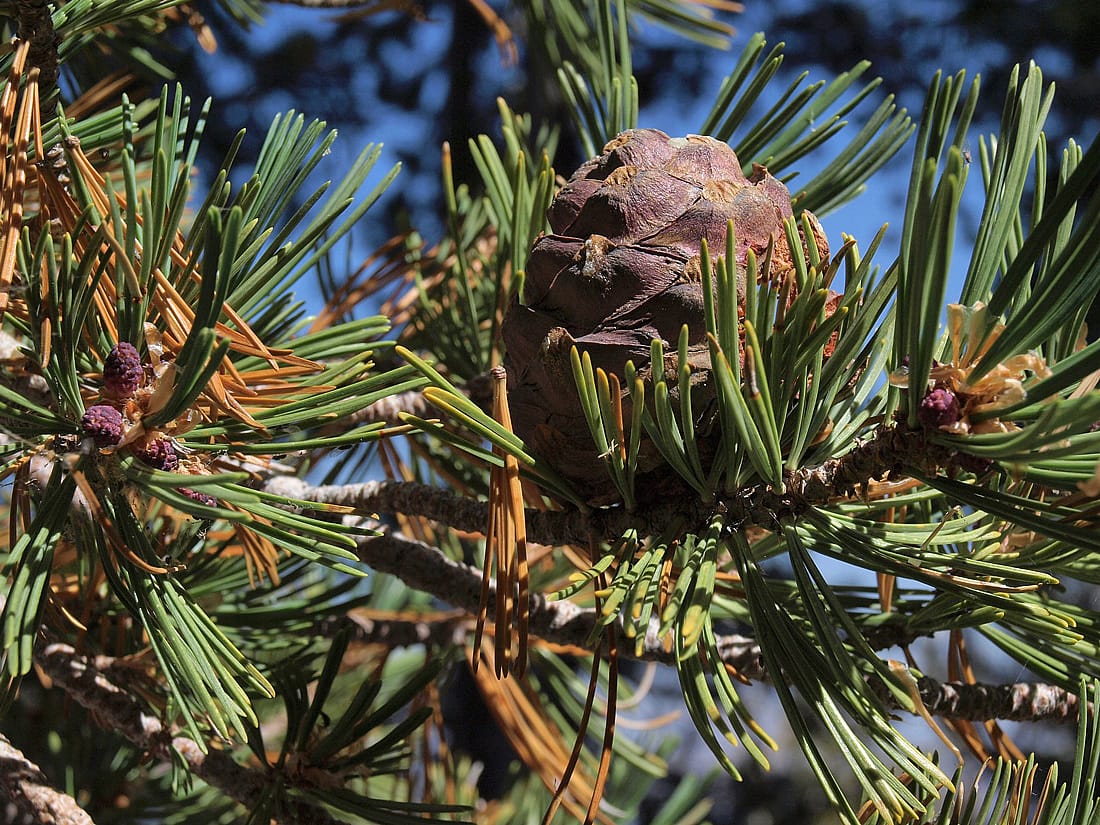
IN SUMMARY
Caching is a common behavior practiced by many birds. It supplies food during times of need, helping the species survive. Not only does caching benefit the various species, but it can also be beneficial for forest regrowth, thus a valuable help to our environment.
Photo Credits
Magpie with peanut by author. I put a handful out each morning. Some have learned how to put two side by side so they can carry off two at a time. https://centerofthewest.org/author/anneh/
Blue Jay collecting peanuts by Ken Gibson, Attribution 2.0 Generic license
Hayabusa the DMRE Peregrine by author, Attribution-NoDerivs license https://www.flickr.com/photos/157982666@N07/
Salem, Amelia, and Remington, were used with permission from the Draper Museum Raptor Experience https://centerofthewest.org/explore/greater-yellowstone-natural-history/raptor-experience/
Acorn Woodpecker by Sara Stasi, Attribution-NonCometrcial2.0 Generic license
Scrub Jay with peanut, by Siamese puppy, Attribution 2,0 Generic License (This license allows me to transform the photo. It has been slightly cropped to fit the blog format better.)
Squirrel caching sunflower seeds by DaPuglet (Tina), Attribution-ShareAlike 2.0 Generic license
Black Capped Chickadee, by Tony’s Takes, Attributon-NonCommercial-NoDerivs 2.0 Generic license
Clark’s Nutcracker, by Aaaron Maizlish, Attributon-NonCommercial 2.0 Generic License
Whitebark Pine, by Jim Morefield, attribution-shareAlike 2.0 license
Written By
Anne Hay
Anne Hay has a Bachelor's degree in Elementary Education and a Master's in Computers in Education. She spent most of her working years teaching third grade at Livingston School in Cody, Wyoming. After retiring she began doing a variety of volunteer work for the Buffalo Bill Center of the West’s Draper Natural History Museum. Anne loves nature and has a concern for the environment. She believes that educating the public, so that they will have a better understanding and appreciation for the natural world, is very important. Because of this belief, volunteering at the Center is a perfect fit. She spends time in the Draper Lab, observing eagle nests for Dr. Charles Preston’s long-term research project on nesting golden eagles, writing observation reports of raptor sightings in the Bighorn Basin, and working with the Draper Museum Raptor Experience. Anne states that, “Having a bird on my glove, is one of my all time favorite things in life.”
